20 Years of Rooftop Films
Rooftop Films, the city’s annual summerlong roving cinematic block party, kicks off its summer 2016 series this week. As ever, expect advance outdoor screenings of anticipated independent films and shorts from talented up-and-comers, invariably enlivened by Q&As with filmmakers and actors, live music, and liquid afterparties, at rooftops and parks across the city, including in Sunset Park, Gowanus, Metrotech Commons, Bushwick, Long Island City and Roosevelt Island.
The screening series traces its origins to a single screening organized by Mark Elijah Rosenberg (a filmmaker and the organization’s Artistic Director), on his rooftop in the East Village, in the summer of 1997. In the years since, Rooftop Films has grown into one of New York’s unique and vital cultural institutions—both for its events, and the increasing financial support it and its sponsors are able to provide for indie filmmakers through production and postproduction grants. This summer marks the 20th year of Rooftop Films—a long time for a New York City arts event, let alone one which by design lacks a permanent home. Dan Nuxoll, Rooftop’s longtime Program Director, answered a few of my questions over email, addressing Rooftop Films’ past, present and future.
What was the original attraction to Rooftop Films? Why, and how, did you first get involved?
I was just an attendee at the very first Rooftop Films screening. Mark Elijah Rosenberg and I had gone to college together at Vassar and he was looking to show some short films. He didn’t own a movie theater, but he had access to his roof in the East Village, so he dragged a 16mm projector and a $200 PA system he had borrowed from his brother and showed some shorts on his roof on 14th Street. It was a really fun night, and a year later he was looking to do it again. His landlord wasn’t going to let him show movies up there again, but some of my friends from high school and I were renovating some warehouse space in Bushwick and turning it into loft apartments (creating what is now known as the McKibbin Lofts). Since I was now the one with a permissive landlord, I got involved, and, along with some other like-minded troublemakers, we built a screen on the roof and showed films there for the next five years.
We didn’t really know much about running a film festival, but we did know how to create fun events. Right from the start we wanted it to be focused on the filmmakers and respectful of their work, but we also wanted to channel the vibe of a punk concert in an activist squatter loft. While the films were playing the audience was attentive to the work, but before the screenings we had bands performing, and after the movies we cracked open a keg and hung out until the beer ran out. Generally speaking, we found most film festivals to be pretty stiff and boring, and we wanted to create happenings that were lively and engrossing—cultural events that didn’t end when the movies stopped playing. I think people responded to that sense of freedom and kept coming out because it was fun.
Also, people just like to hang out on rooftops.
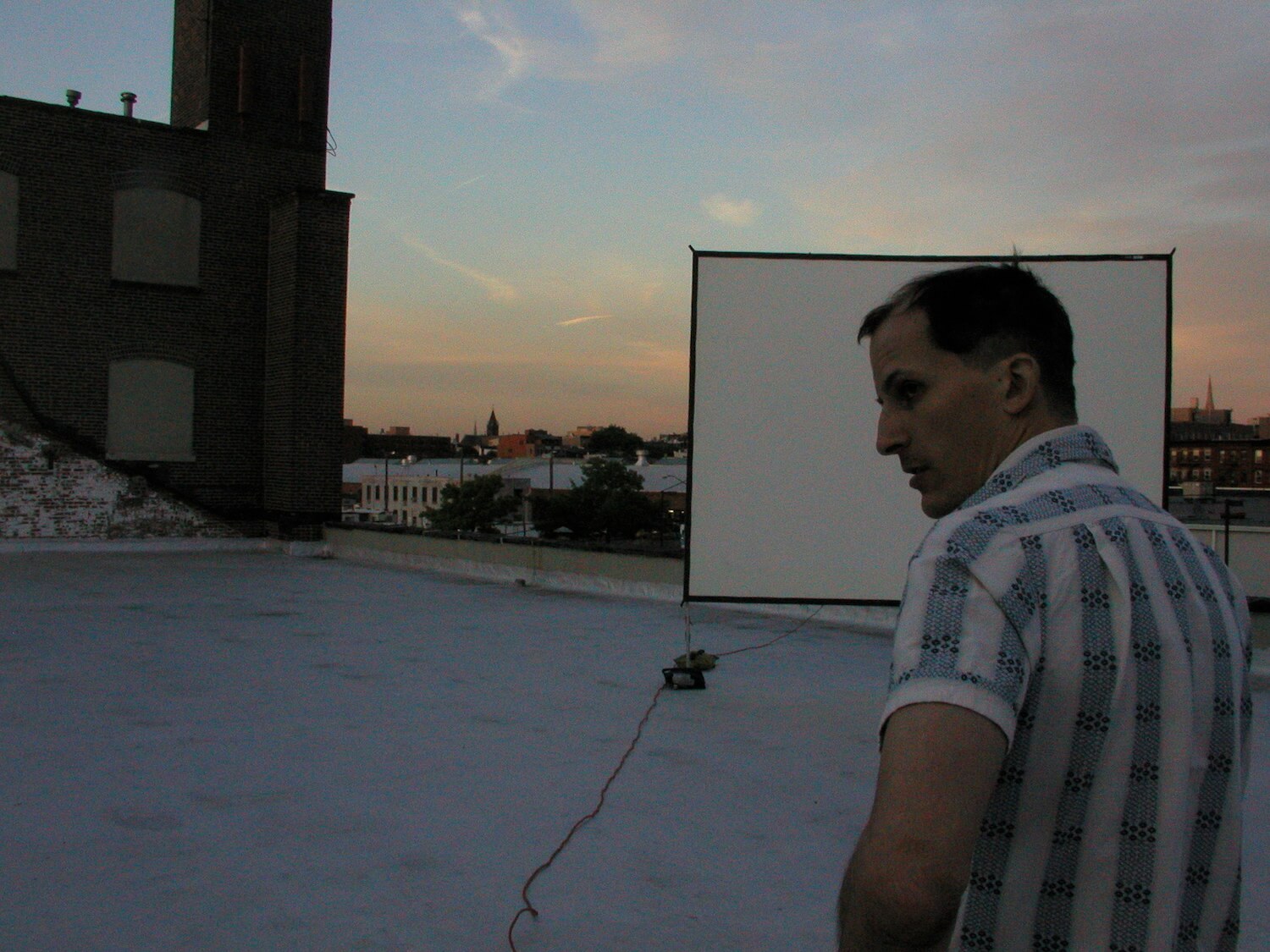

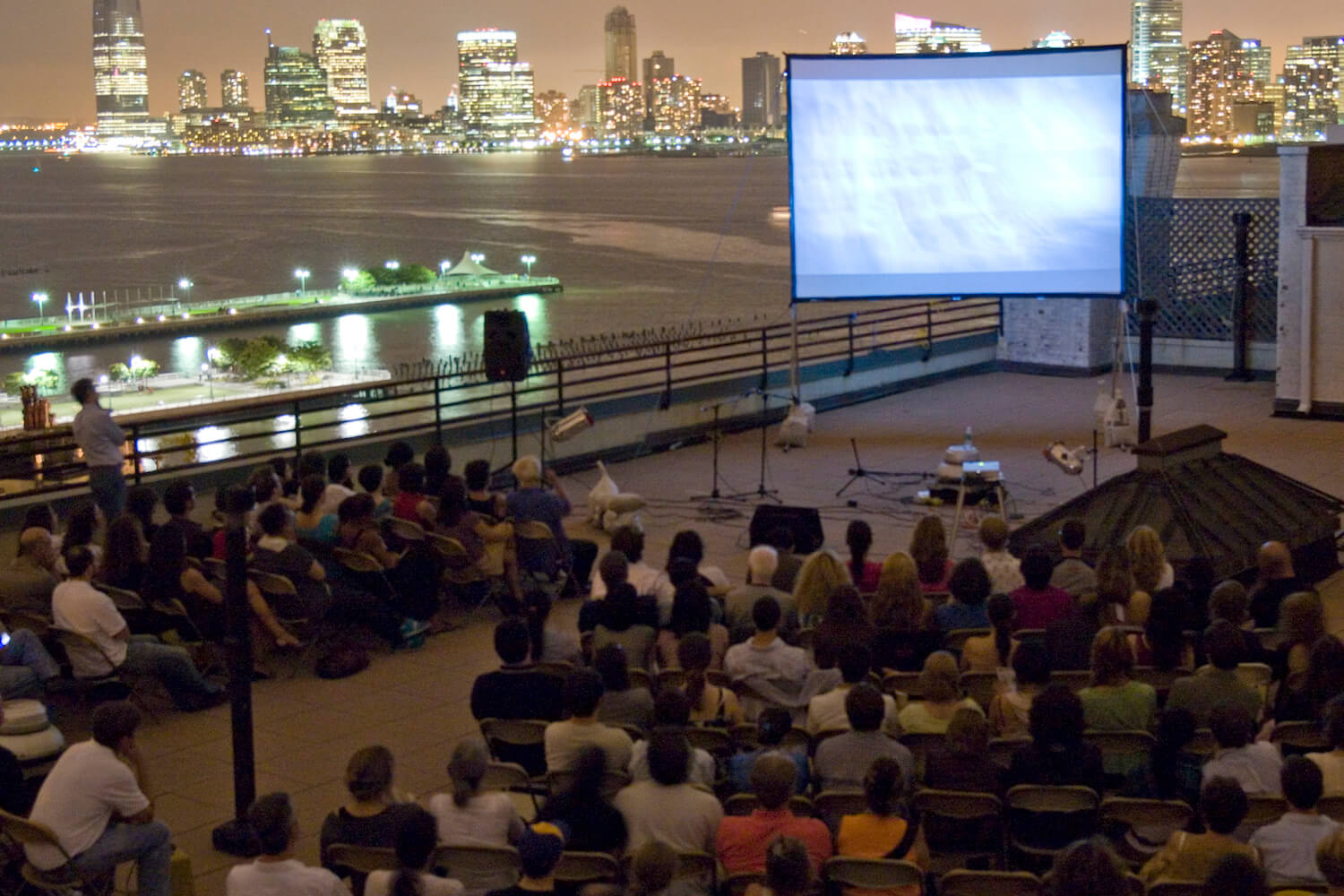

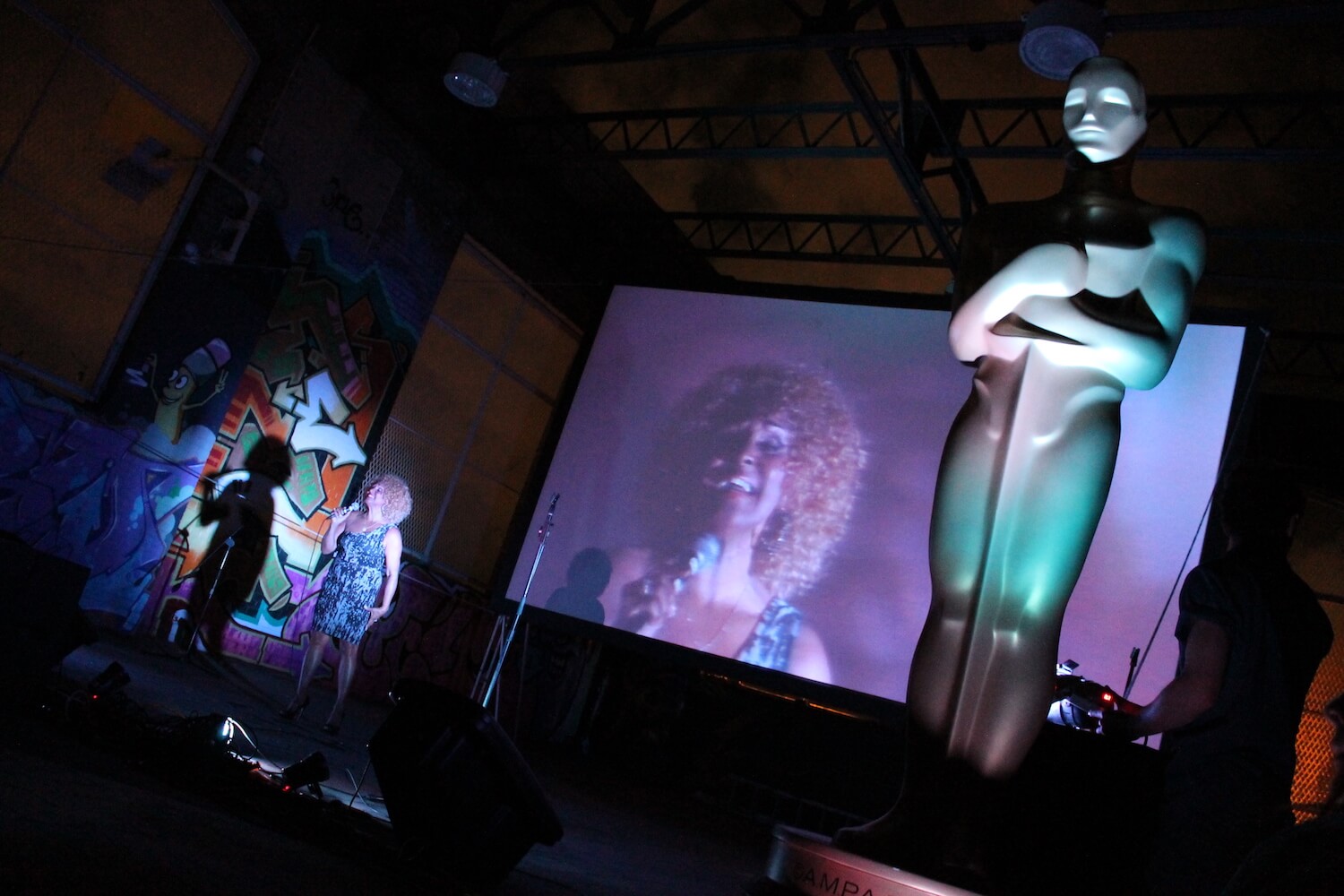

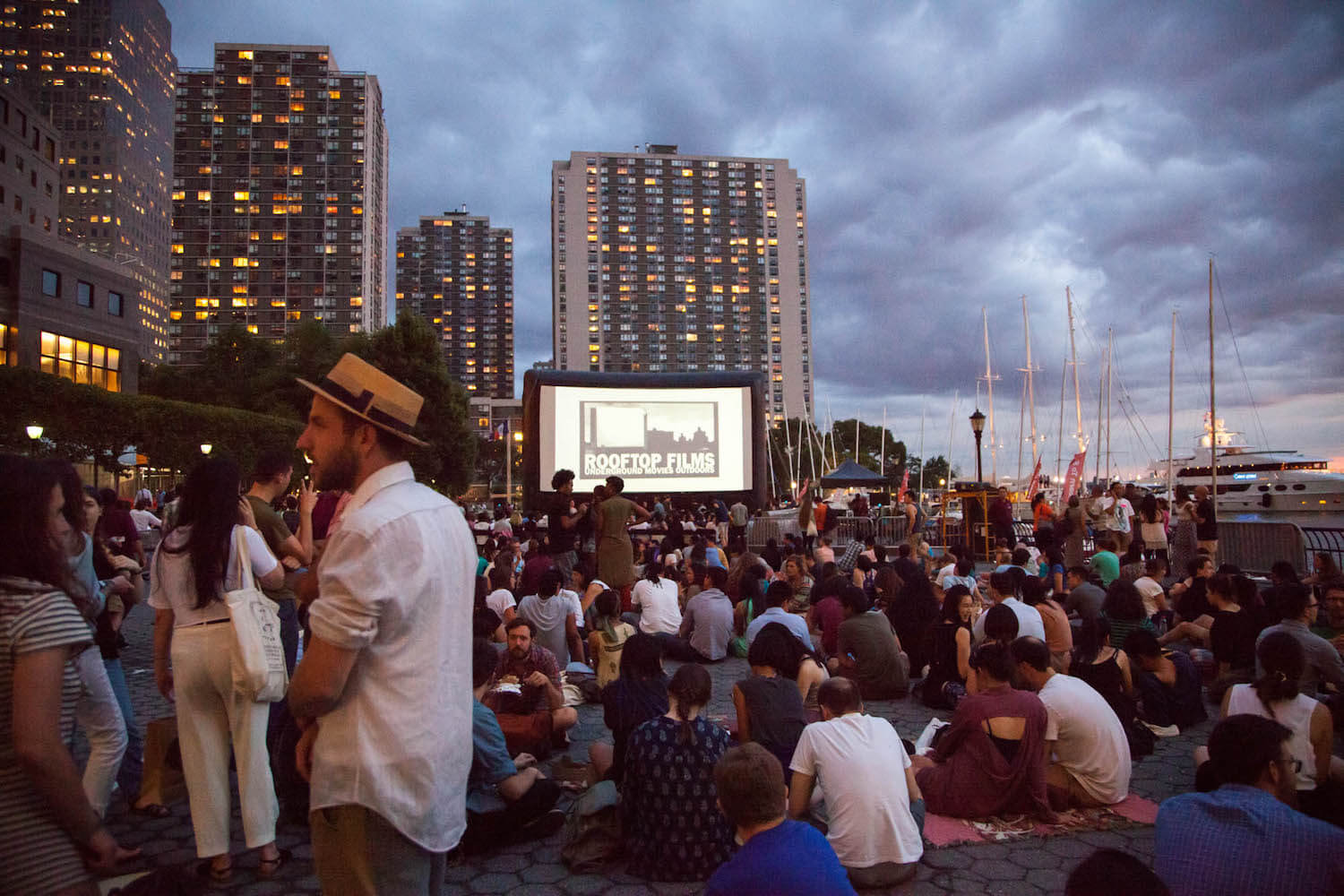

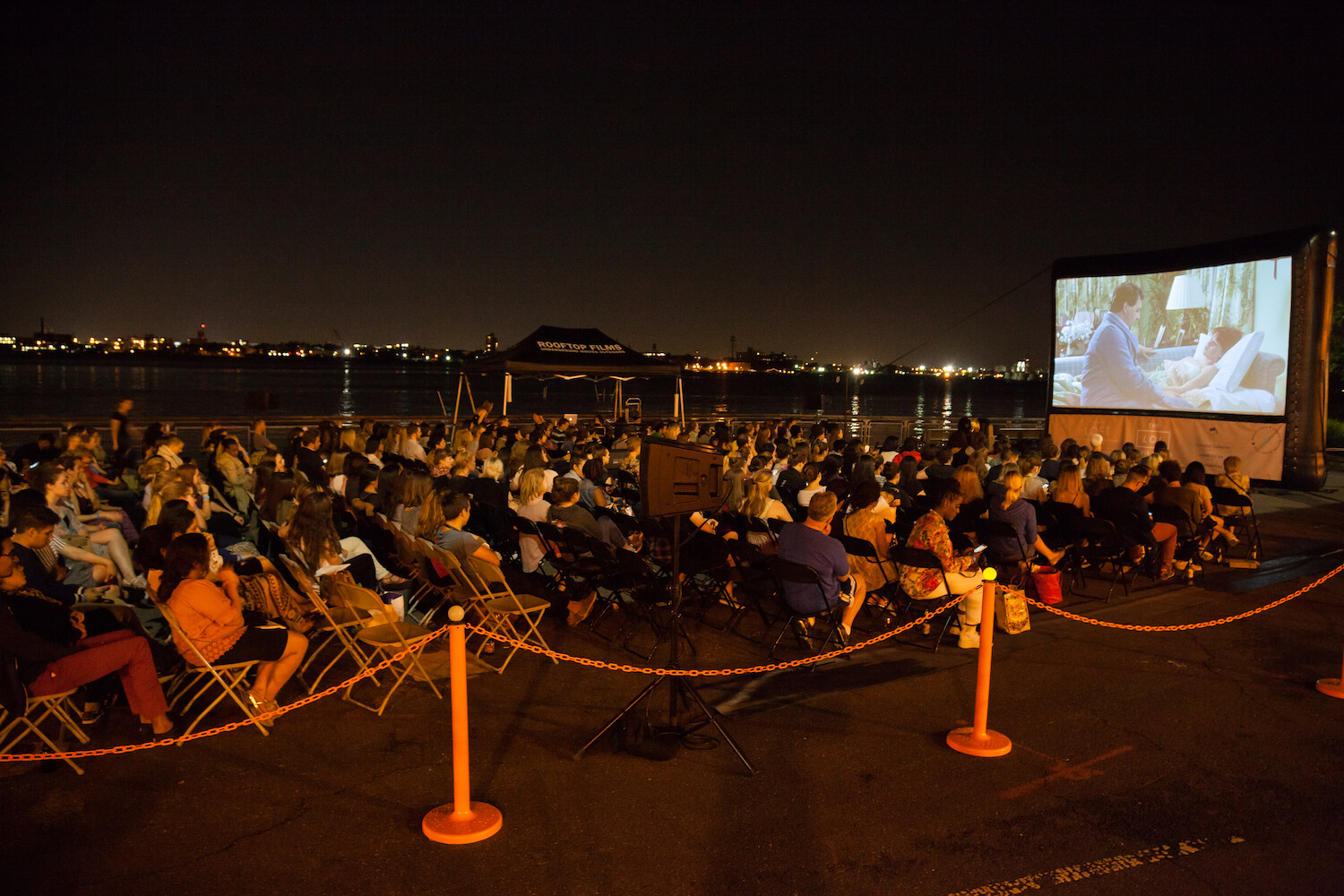

Top of page: McKibben Street, 2001 (photo Sarah Palmer). Above, top to bottom: The first Rooftop screening at the Old American Can Factory in Gowanus, 2003 (photo Sarah Palmer). “The Show Must Go On” shorts program, Westbeth, July 26 2007. Darlene Love performs after Twenty Feet from Stardom, New Design High School, June 8 2013. Animation Block Party shorts program, Brookfield Place, July 30 2014. Sixteen Candles, Solar One, 17 June 2015.
It’s fascinating to read about Rooftop’s history and think about it in relation to with New York’s: a recent film-school graduate hosts a 16mm screening on his roof in the in East Village in the summer of 1997 (Bartolo Colon’s rookie season); the next couple of years saw a few screenings a summer on a roof of new loft conversions on McKibben Street; the series expands and raises its profile. How have the changes in New York City over the last 20 years affected Rooftop?
Ah, Bartolo. Mark and I are both diehard baseball fans, so if anyone knows how to convince Colon to come out to celebrate our shared anniversary, please email me.
Many of the early Rooftop organizers (including myself) were born and raised in New York City, so we were well aware of the winds of change. We were able to lock in that space on McKibbin Street because we knew the neighborhood would blow up a few years later, and we moved on to venues in Gowanus and Sunset Park in later years for much the same reason. But our relationship with neighborhood transformation and gentrification has always been complicated.
On the one hand, we have relocated from one neighborhood to the next because we have been forced out of locations by the rise in expenses just like everybody else. Unless you already own a lot of property, I think that any individual or business in New York City has to be proactive about relocating. If you wait until you are priced out of a neighborhood then you are already too late for the next opportunity. So we are always looking for new locations for our screenings and keeping a close eye on opportunities that present themselves in areas that aren’t yet considered cultural hotspots. To some extent we have moved from neighborhood to neighborhood out of necessity, because we didn’t want to be caught flat-footed when a venue disappeared or our rent tripled.
That being said, though some of our relocations have been out of necessity, we also welcome those changes and are always seeking new locations in different neighborhoods. Our audience is pretty adventurous, and I think they look to us to point them towards new spots almost as much as they turn to us for recommendations on new independent films and music. We try to take advantage of changes in neighborhood initiatives, rather than be left behind by transformation. And I think that the communities benefit from our presence. We aren’t an organization that is powerful enough to halt gentrification and displacement, but I think we can help to make some of the changes more mindful and culturally valuable, and bridge the new and old residents in each of the areas that we touch.
What was the city’s indie film community like 20 or 15 years ago? What sort of venues and showcases were available (would you say more or fewer than now)?
There were many fewer places in NYC to see independent films back when we launched. There was no IFC Center, no BAMcinnematek or cinemaFest, no Nitehawk, no Tribeca Film Festival, no Uniondocs, no DOC NYC. And now you have the Metrograph, a Drafthouse opening soon, and more theaters and expansions on the way. There are certainly some great festivals that have shut down—I was always a big fan of the New York Underground Film Festival—but there are certainly many more venues now than there were back then. Furthermore, there are probably ten times as many outdoor film series in New York now then there were in 1997—though we remain one of the very few outdoor series that showcases independent film.
People talk a lot about how independent filmmakers struggle to find an audience these days, but the reality is that there are many more millions of dollars being spent on independent film experiences in New York than there were when we started. Of course, with all of the added venues and fests, there is also added competition, so a theater like Film Forum might have to work harder to attract audiences than they did in 1995 when they were only competing with a few other theaters. But the net impact of all of these venues is that there are more people seeing independent cinema than ever before. I find it odd when people sometimes argue that this is a bad thing.
Partly as a result of all of these new venues, there are many more filmmakers in New York than ever before. The community here is massive. When you travel to festivals in other parts of the world you will spend half your time hanging out with fellow Brooklynites.
What do you remember about those first years? What were some of the most memorable events from the late 1990s, the 2000s, and the last five years?
There are so many memorable moments. Those early years were filled with a lot of hard labor—a lot of it grunt work. There was a small group of committed volunteer staff back then and none of us were getting paid. We had to do everything: build the screen, move the chairs, hand out fliers, design the website. It was sometimes grueling, but we learned a lot about all sides of the business, and the struggle created a sense of camaraderie that persists.
Some of my favorite moments over the years include: a special screening on October 11, 2001, when we put together a selection of short films all made in immediate response to the September 11th attacks; screening Trouble the Water on the lawn of Harlem Meer with a live performance by Kimberly Rivers; putting together a screening for the first-ever public event on Governor’s Island; having LARPers in full suits of armor battle on the lawn prior to a sold-out screening of Darkon; Jose Gonzalez performing to a perfectly hushed crowd on a roof in the Lower East Side; semi-pro wrestlers breaking out into a battle royale following our screening of the wrestling doc Fake it So Real; presenting the NY premiere of Lena Dunham’s Tiny Furniture back before she was the voice of a generation.
There is no shortage of fun memories.
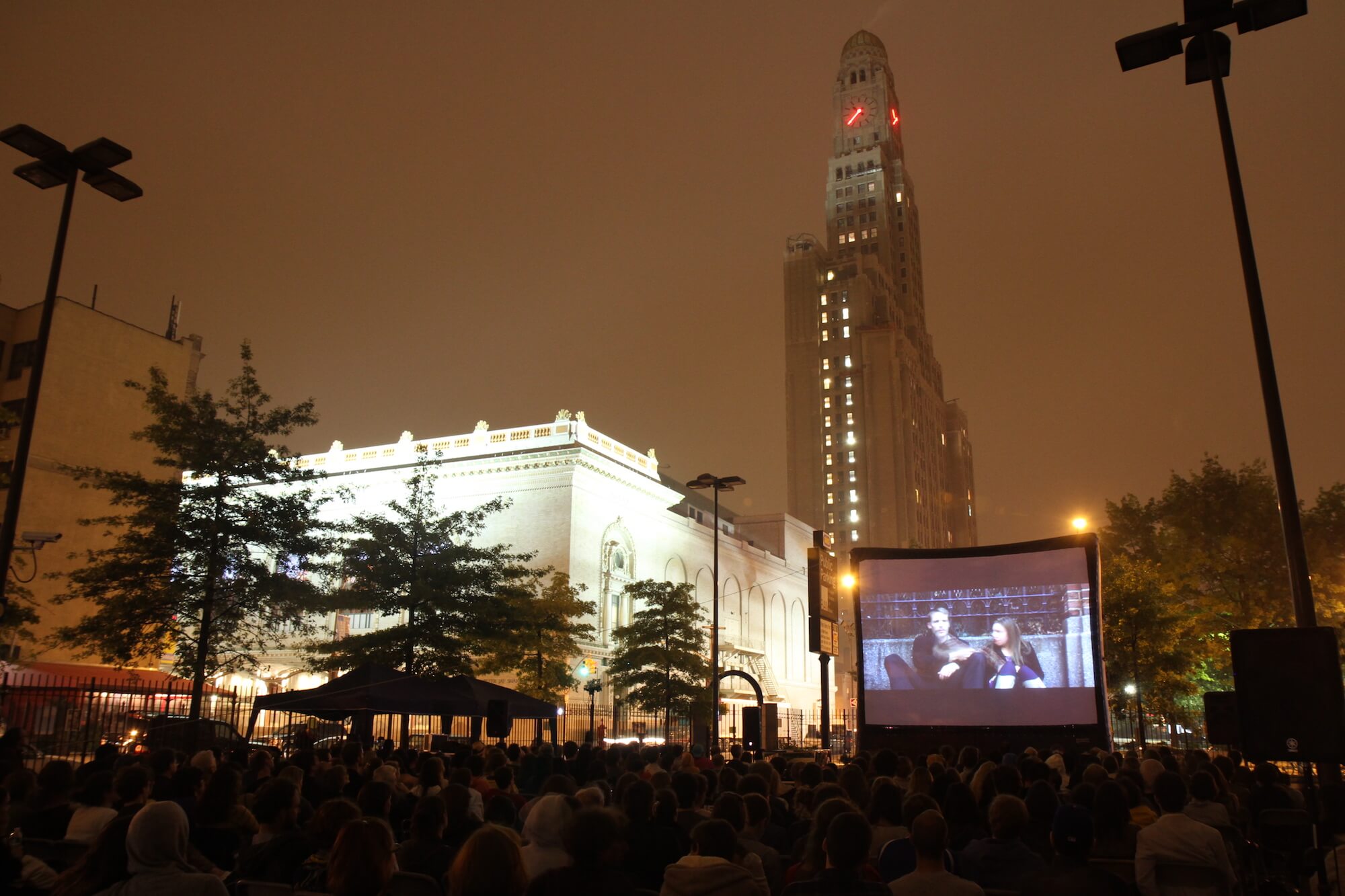



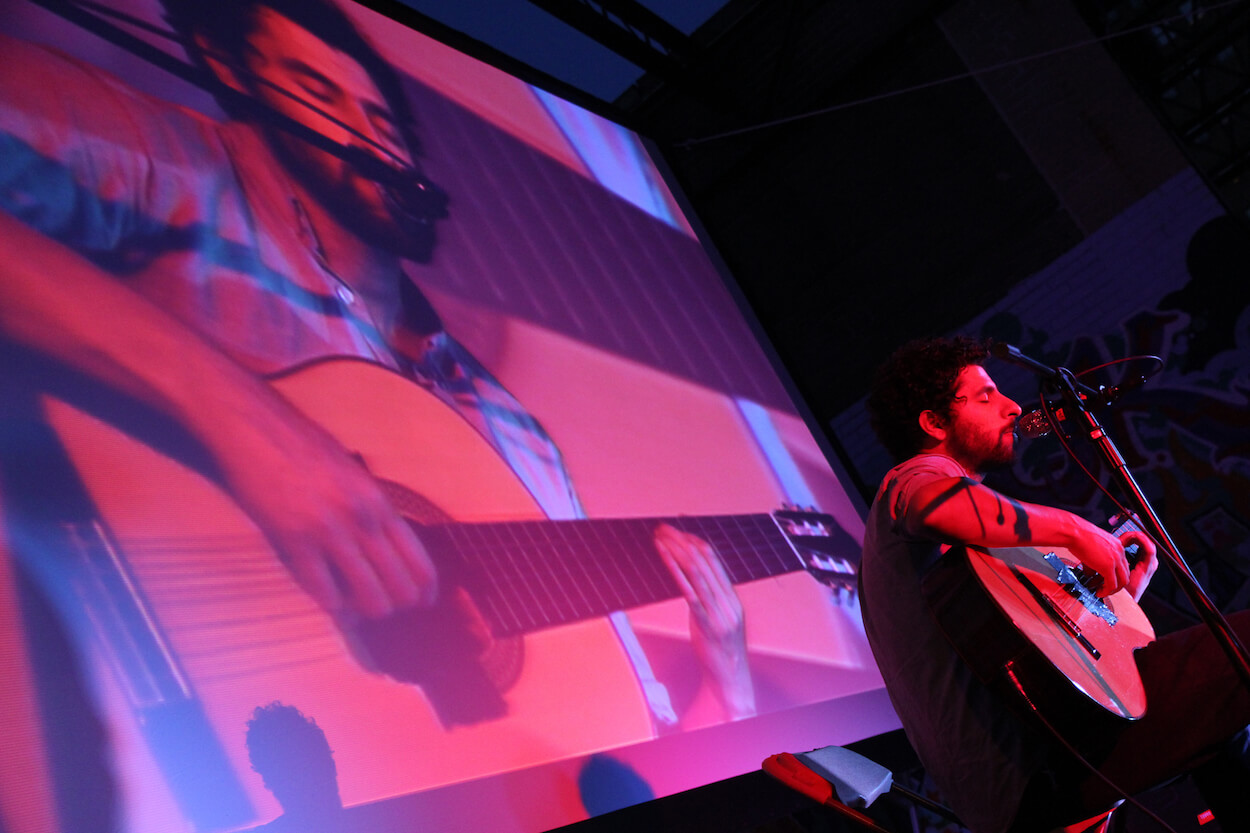

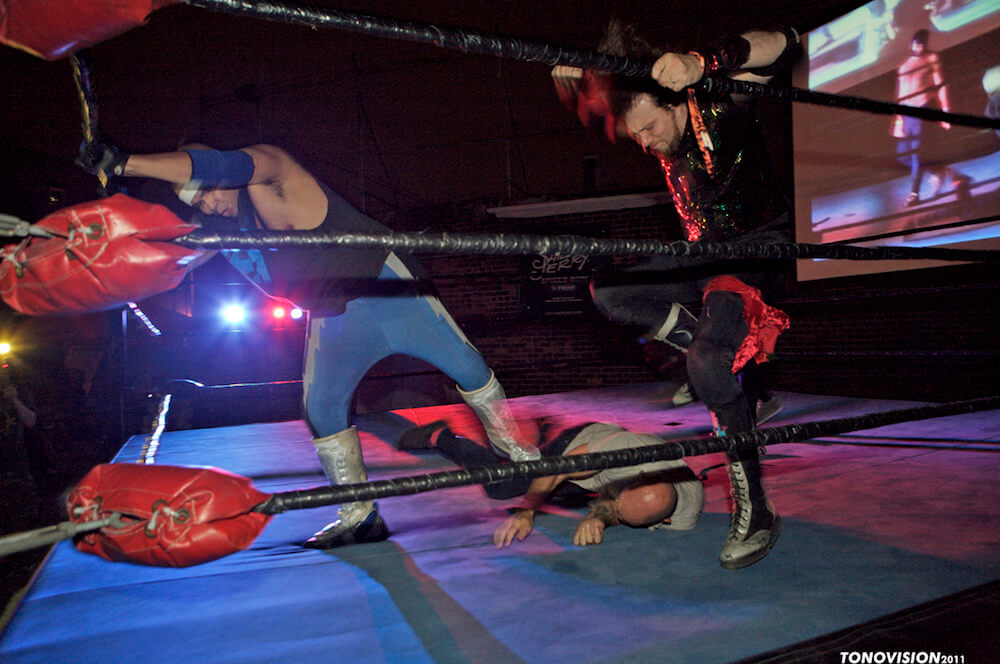

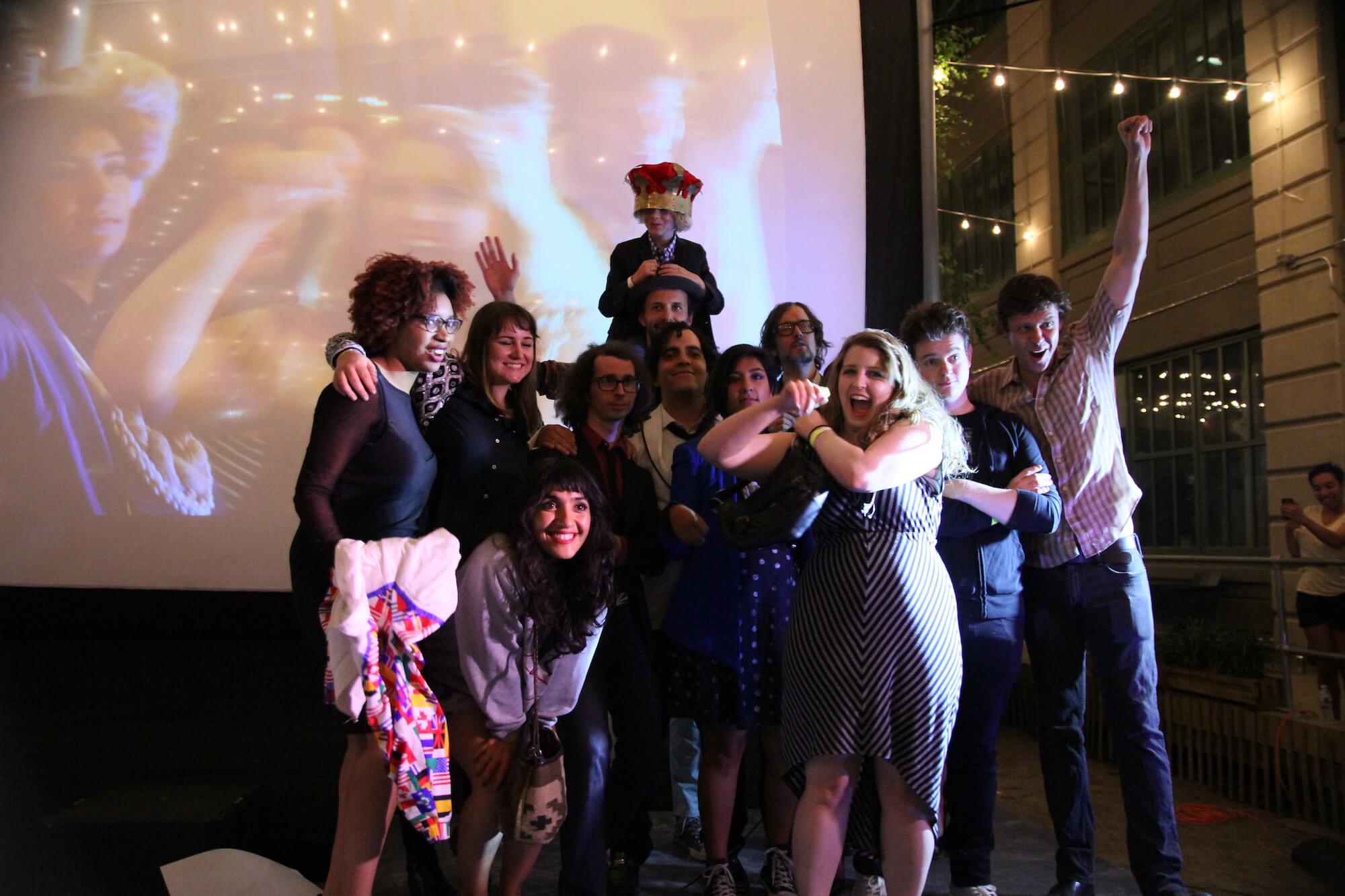

There are so many more independent and underground films made today than twenty years ago; is there more “competition” in terms of putting together marquee events around independent film? As a programmer, do you aim for a balance between big events on the film calendar and underground discoveries? What is the “right” balance?
Yeah, the competition is pretty fierce, and the battle for premieres gets ugly at times. We avoid part of that silliness because we don’t really care that much about premiere status. It’s such a futile pursuit. New York is a big city with plenty of film fans, and even if a film screened a couple of times somewhere else in town that doesn’t make our events less special. For instance, A Girl Walks Home Alone at Night screened at New Directors/New Films a few months before it screened with us, but I am pretty sure that our screening and raucous after-party made for the more memorable event. If we can create a great event then we know people will show up and have a fun time.
As for the proper balance of big and small films—generally speaking we don’t worry about it too much. We show the films that had the most impact on us, that we found most memorable, and that we think will make for the best event, and in the end it usually works out to be a pretty comfortable mix of films that have gotten some hype and films that haven’t. This year we will have some bigger films like Weiner, Author: The JT Leroy Story, Tony Robbins: I am Not Your Guru, and others. But we will also have plenty of films that haven’t yet gotten the buzz they deserve, such as In the Treetops, Don Juan and Girl Asleep. And when we are trying to decide between two films we tend to pick the one that will make for the best show.
In reality, there are very few independent films that don’t need all the help that they can get, so we are confident that just about any film that we are presenting will benefit from the exposure.
Rooftop’s alumni grants seem to be an increasingly large part of its mission. Was it always in the cards for Rooftop to be a financial resource for independent filmmakers? What motivated Rooftop to start the grant program, and are there plans in place to expand it?
We take our status as a non-profit very seriously and have always felt strongly that if we weren’t doing everything that we could to support filmmakers then we should get out of the business. If other non-profits showed that same level of commitment to filmmakers, I think the life of the modern independent director would be a lot more pleasant and production.
We didn’t have very many resources in the early years and we didn’t think that giving out tiny screening fees was the most cost-effective use of the meager reserves we had available at the time. But a couple of years into our existence we started to put aside one dollar out of every ticket we sold and every submission fee we took in and we put it into a fund so we could give out grants to filmmakers. Slowly that pool got bigger, and we were able to bring in sponsors and funders to help us to give out even bigger cash and service grants, providing camera packages, lighting equipment, publicity assistance, color correction, sound mixing, etc. At this point we give out more than $150,000 in cash and services each year to alumni filmmakers to help them to make their next film. Since we know the filmmakers well, I think we have been able to choose our grantees rather judiciously, and we are proud to have supported some amazing films like Obvious Child, Beasts of the Southern Wild, The Fits, Martha Marcy May Marlene, and many more.
And yes, we definitely plan to keep expanding it. We have added new grants just about every year, and in the last year we have already brought on three new sponsors: Garbo NYC, who will award $25,000 in cash grants each year; Sound Lounge, who will give out a full sound mix for a feature film; and Nice Shoes, who will award deluxe color-correction services. Hopefully there will be more to come.
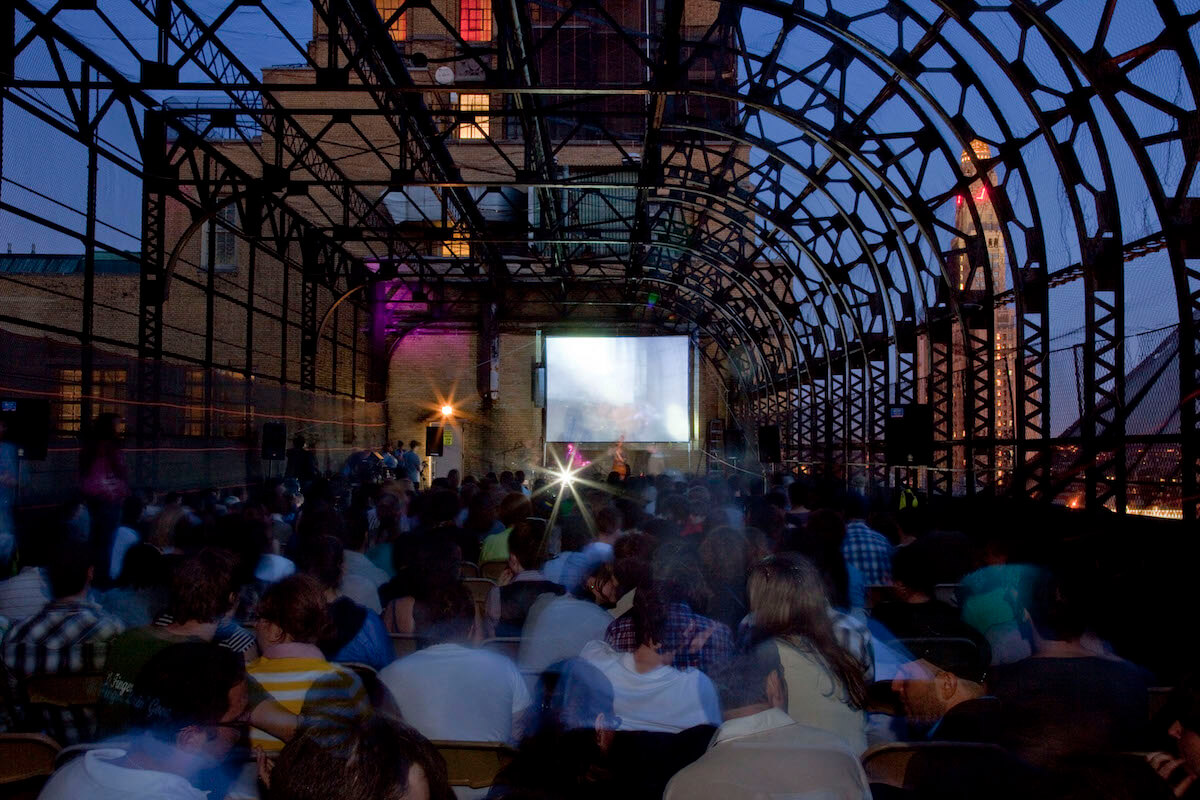

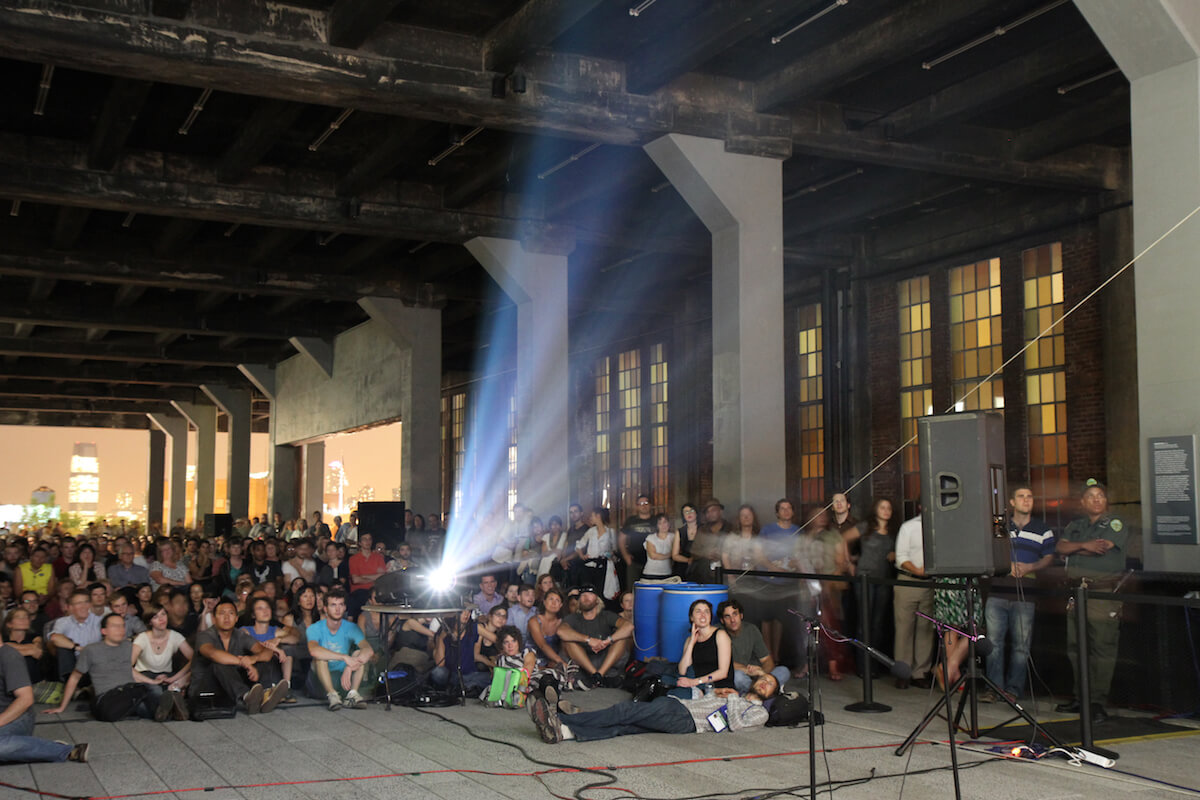

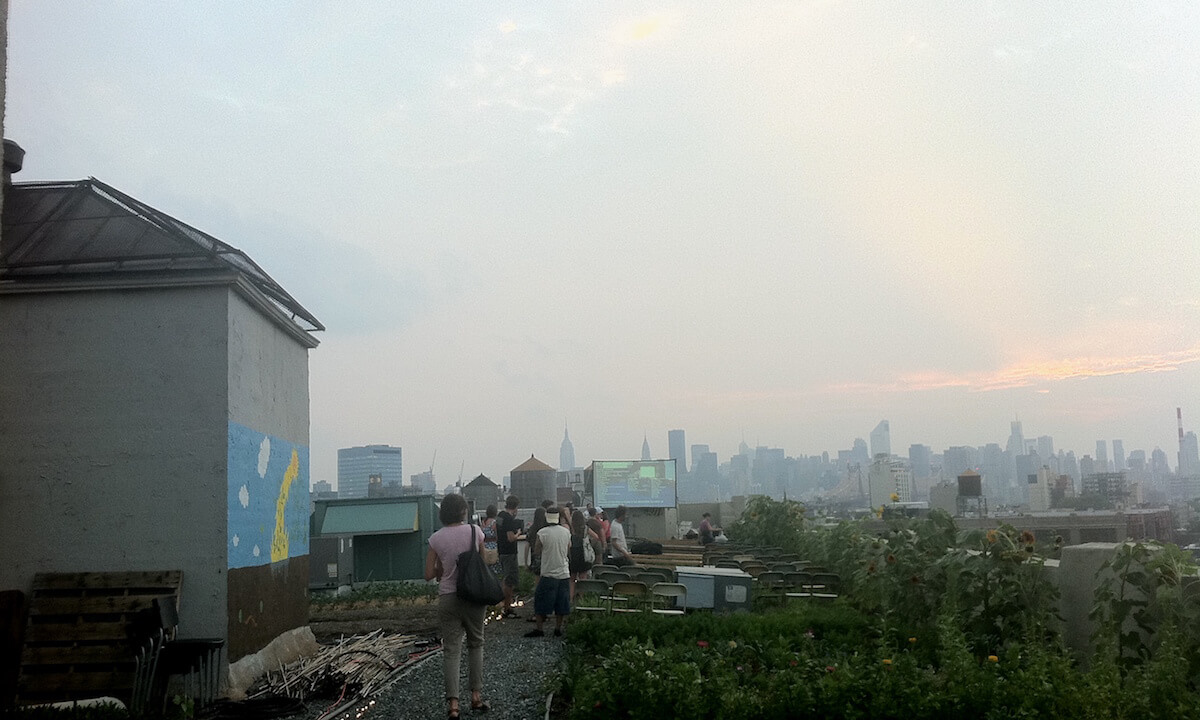

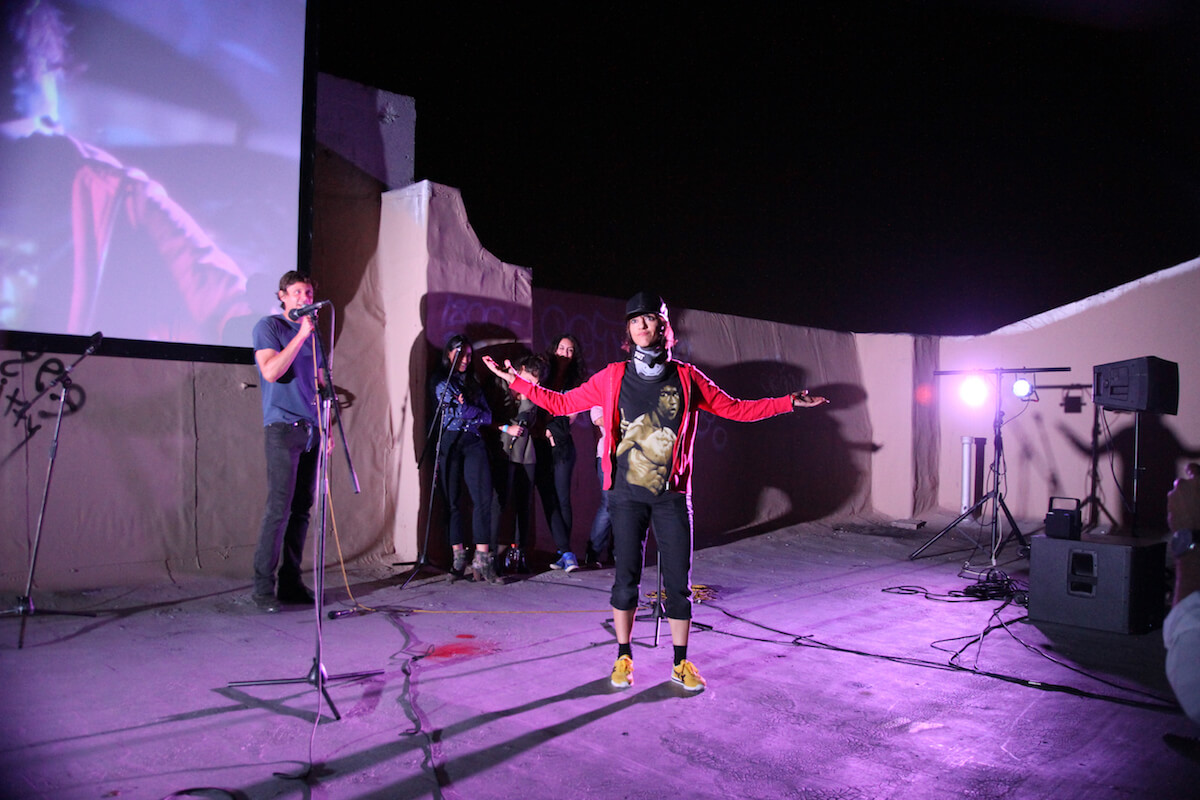

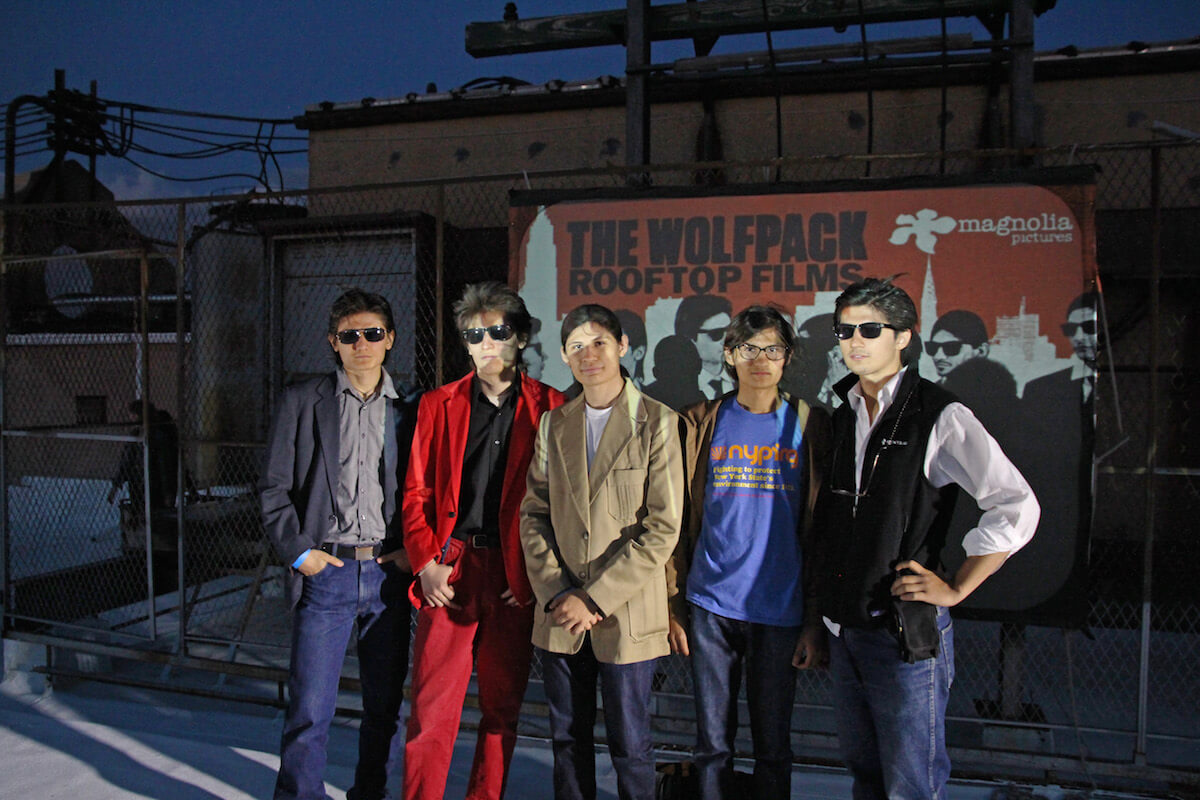

Above, top to bottom: The “Dangerous Docs” program, Brooklyn Tech, May 23 2009. Twelve Ways to Sunday, the High Line, September 22 2010 (photo Irwin Seow). The “Off the Beaten Path” shorts program, Brooklyn Grange, May 29 2014. A Girl Walks Home Alone at Night, Industry City, August 2 2014. The subjects of The Wolfpack, Industry City, June 6 2015.
To what do you attribute Rooftop’s growth over the last 20 years?
Good luck? Global warming? In all seriousness, I think we are still around because we had a good idea, we remained ethical, we treated filmmakers and our audiences well, and we remained nimble and adaptable. We have adjusted to challenges, but remain the same well-meaning, hard-working crew that we were 20 years ago, and people tend to respect that. And I suppose we have decent taste in film and music.
What new challenges and goals will present themselves to Rooftop in the next few years?
I think the real estate market will continue to be an issue. There are fewer large, open spaces that are available, and those that do exist are very often owned by people who are in a rush to maximize their monetization. That’s always been true, but spaces have become more and more sparse and spread out over time. Perhaps that will slow or reverse one of these days, but I am not counting on it. Since we don’t own a building and don’t have long-term agreements with our venues, it can be difficult to plan very far into the future.
Also, the aforementioned competition isn’t disappearing anytime soon. At this point there must be more than a thousand outdoor film screenings a year in New York, plus hundreds of indoor festivals. Some of the competition even attempts to infringe on our copyright and pass themselves off as us. We will need to continue to innovate to stay ahead of the pack. But I think we can do that.
What are you most excited for in this year’s program?
So much of it! We wanted to make this a very festive series, and some of our events are going to be a little insane. Of course we have some great documentaries, including our screening of Weiner on May 18—that film is easily my favorite doc of the year. I am currently finishing up the details for our screening of Danny Brown: Live at the Majestic, a new concert doc by Andrew Cohn that we will premiere at House of Vans, followed by a live performance by Danny Brown. I love Danny Brown, and that is going to be fun. I get a little giddy just thinking about it. Two days after that we will present Los Punks: We Are All We Have, which will be accompanied by performances by Latino punk bands from L.A. Tony Robbins will be in attendance for our screening of Joe Berlinger’s Tony Robbins: I Am Not Your Guru, and I am excited to see how people to react to that film. Whatever your feelings are about Tony Robbins, I don’t think many people will deny that it is an exceptionally entertaining film. Also, that guy is massive. He has the biggest hands I have ever seen. People should come out just to witness that.
On the fiction side of things there are some really charming gems, including Donald Cried, which really should have won SXSW, and White Girl, which is an intense and magnificently well-made provocation from first-time feature filmmaker Elizabeth Wood.
And, of course, we also have some great short film events, including our New York Non-Fiction program, another massive presentation up at Storm King, and our opening and closing events will be huge and fun and beautiful, as always. There’s a lot going on. People should come check it out.
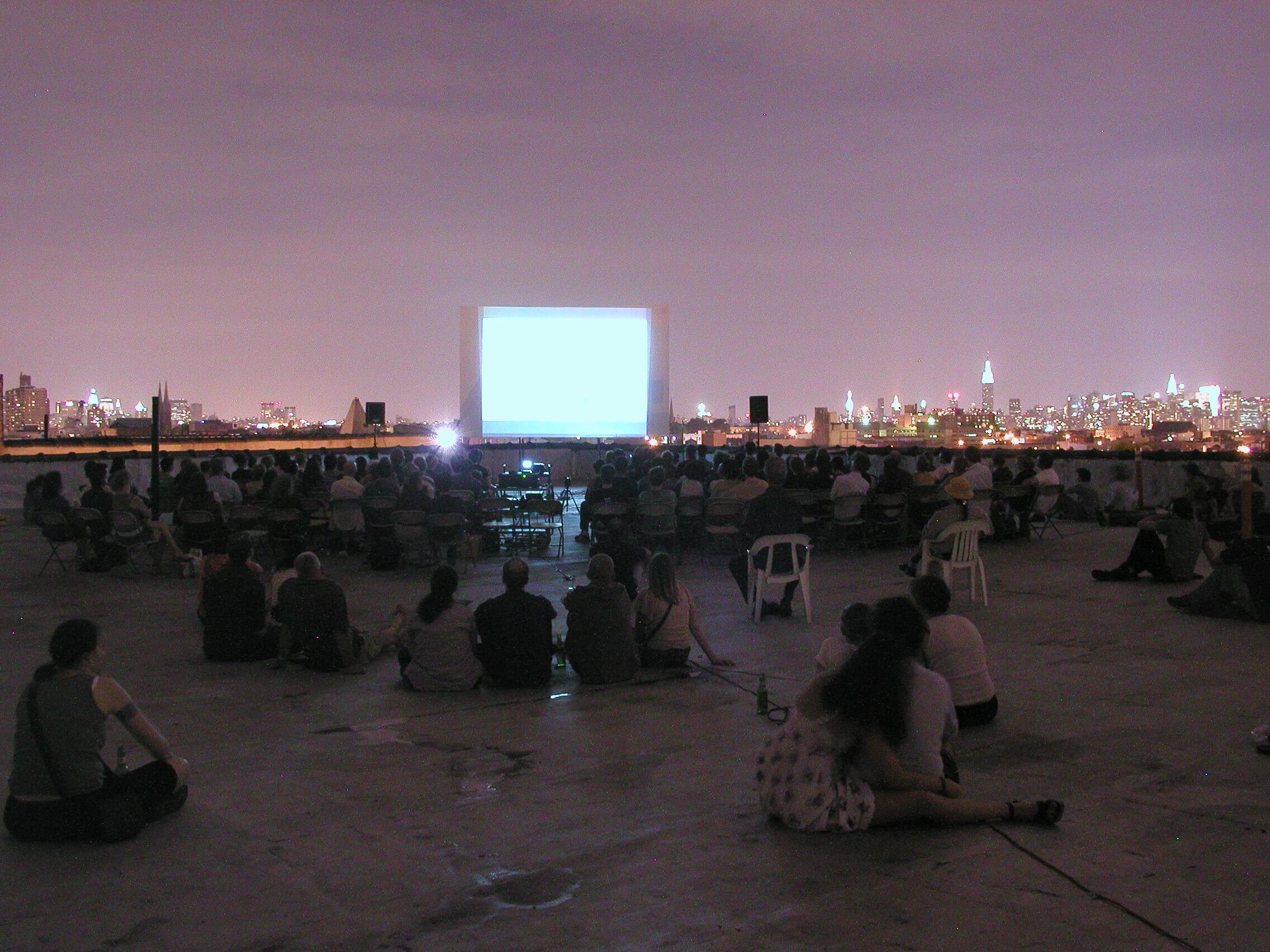

Bushwick, July 27, 2003 (photo Sarah Palmer).
You might also like 




















